The Kariye Museum
Steven Dutch, Professor Emeritus, Natural and Applied Sciences, Universityof Wisconsin - Green Bay
| The Kariye is a small Byzantine church built in the 9th and 10th centuries on the site of an earlier church. It was converted into a mosque around 1500 but apart from the addition of a minaret, the exterior is unchanged. Below are exterior views. | |
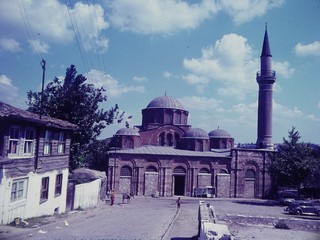 | 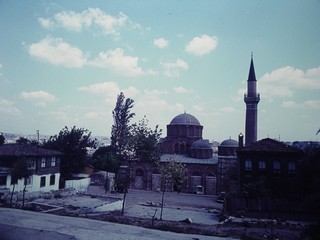 |
Even by the standards of religious fanatics the Byzantine Empire produced some extreme cases, and one of the worst were the iconoclasts or breakers of icons. Their stance was that religious art amounted to idolatry, and periodically they would rise up and desecrate churches, destroying innumerable works of art. Moslems, too, forbid representations of people and living things in their houses of worship, but unlike the iconoclasts, or the Taliban in Afghanistan, when the Turks took over the church, they plastered over the frescoes and mosaics inside. Over the centuries, their existence was forgotten. After the Ataturk revolution, restorers working on the mosque rediscovered the art, preserved as if in a time capsule. | |
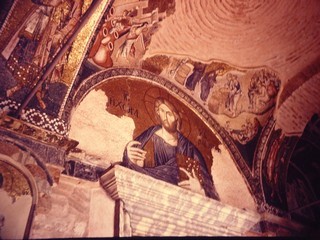 | Byzantine religious art was highly codified, with each gesture symbolizing something. Christ in this pose is called Christ Pantokrator (ruler of all). |
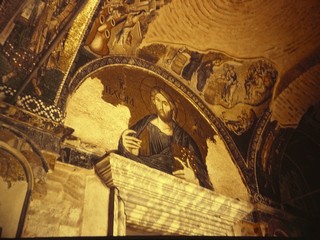 | 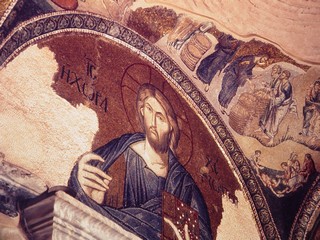 |
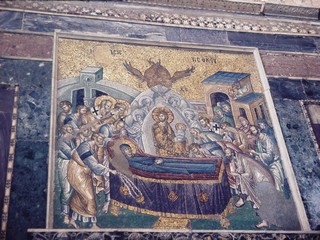 | Left and below: Mosaic showing the death of Mary on the back wall of the main chapel. |
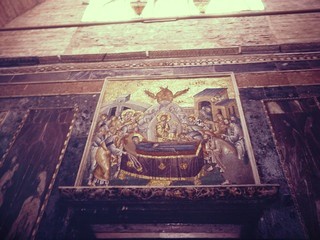 | 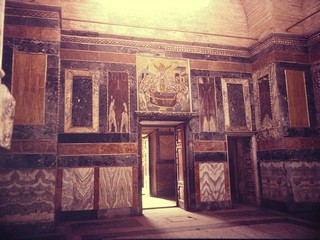 |
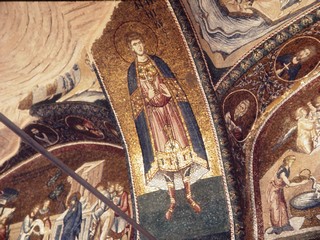 | |
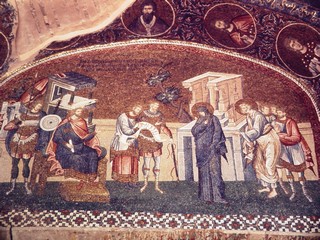 | 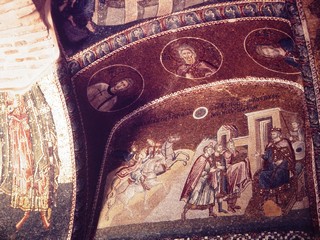 |
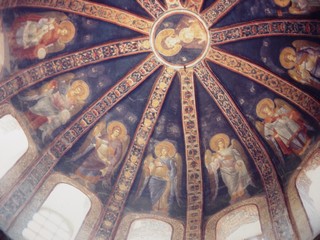 | 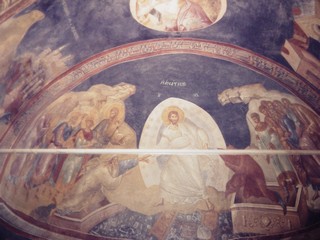 |
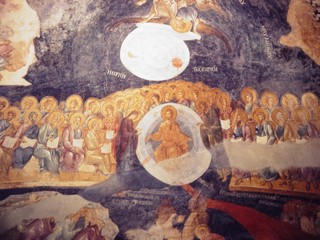 | 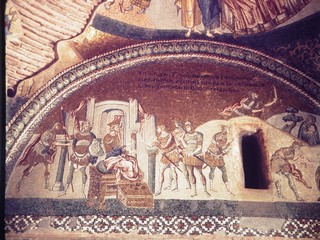 |
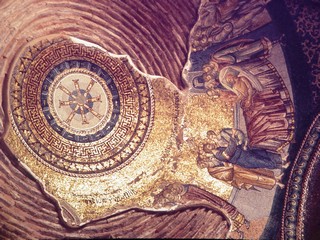 | 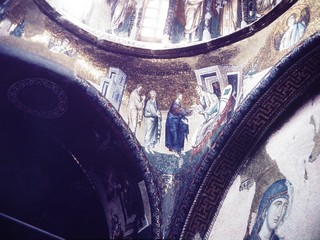 |
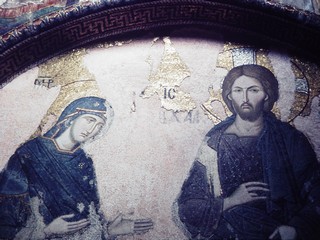 | 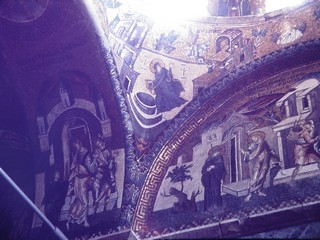 |
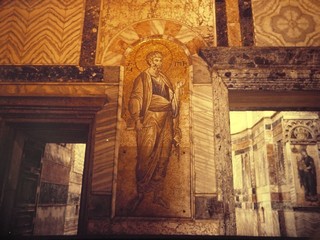 | 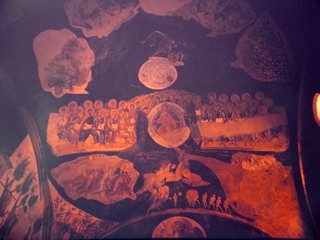 |
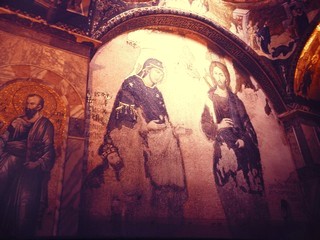 | |
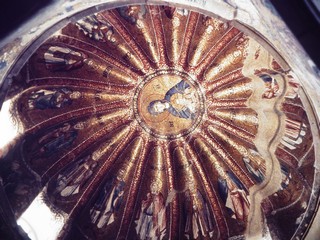 | Left and below: the main dome |
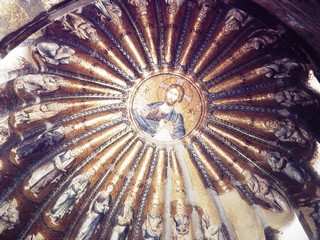 | 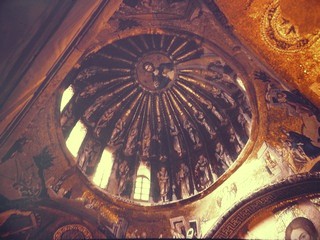 |
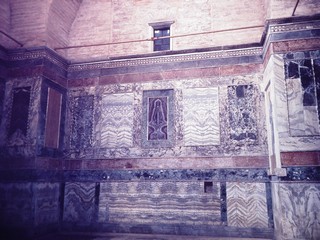 | Left and below: the stone panels are nearly as wonderful as the mosaics. |
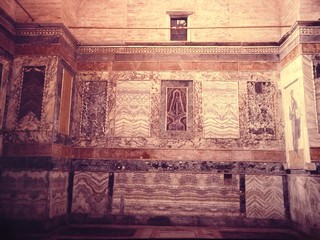 | 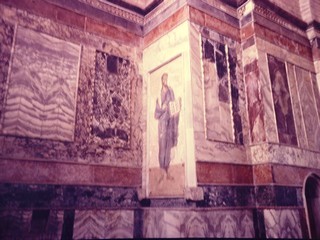 |
Return to A Year in Turkey
Return to Professor Dutch's Home Page
Created 19 December 2003, Last Update 24 May 2020